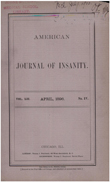Characteristics of emergency services personnel related to peritraumatic dissociation during critical incident exposure
Abstract
OBJECTIVE: The aim of this study was to identify characteristics of emergency services personnel related to acute dissociative responses at the time of critical incident exposure, a phenomenon designated "peritraumatic dissociation." METHOD: The authors studied 157 rescue workers who responded to the Nimitz Freeway collapse during the 1989 Loma Prieta earthquake in the San Francisco Bay Area as well as 201 rescue workers who were not involved in that disaster. Demographics, level of critical incident exposure, perceived threat at the time of exposure, personality attributes (assessed by the Hogan Personality Inventory), coping strategies (assessed by the Ways of Coping Questionnaire), and locus of control were related to subjects' scores on the Peritraumatic Dissociative Experiences Questionnaire. RESULTS: According to univariate tests, the subjects with clinically meaningful levels of peritraumatic dissociation were younger; reported greater exposure to critical incident stress; felt greater perceived threat; had lower scores on the adjustment, identify, ambition, and prudence scales of the Hogan Personality Inventory; had higher scores on measures of coping by means of escape-avoidance, self-control, and active problem solving; and had greater externality in locus of control. Linear modeling with multiple logistic regression analyses indicated that greater feelings of perceived threat, coping by means of escape-avoidance, and coping by means of self-control were associated with a greater likelihood of being in the peritraumatic dissociation group, above and beyond age and exposure to stress. CONCLUSIONS: Rescue workers who are shy, inhibited, uncertain about their identity, or reluctant to take leadership roles, who have global cognitive styles, who believe their fate is determined by factors beyond their control, and who cope with critical incident trauma by emotional suppression and wishful thinking are at higher risk for acute dissociative responses to trauma and subsequent posttraumatic stress disorder.
Access content
To read the fulltext, please use one of the options below to sign in or purchase access.- Personal login
- Institutional Login
- Sign in via OpenAthens
- Register for access
-
Please login/register if you wish to pair your device and check access availability.
Not a subscriber?
PsychiatryOnline subscription options offer access to the DSM-5 library, books, journals, CME, and patient resources. This all-in-one virtual library provides psychiatrists and mental health professionals with key resources for diagnosis, treatment, research, and professional development.
Need more help? PsychiatryOnline Customer Service may be reached by emailing [email protected] or by calling 800-368-5777 (in the U.S.) or 703-907-7322 (outside the U.S.).



